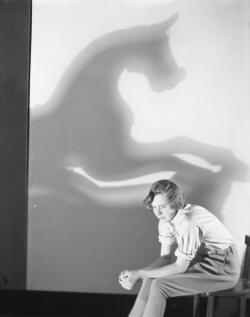 Elizabeth
Wheeler (1920-1956) was a lesbian director of Last Night We Attacked.
She was the grand-niece of Miriam
Daniell.
Elizabeth
Wheeler (1920-1956) was a lesbian director of Last Night We Attacked.
She was the grand-niece of Miriam
Daniell. Queer Places:
Smith College (Seven Sisters), 9 Elm St, Northampton, MA 01063
 Elizabeth
Wheeler (1920-1956) was a lesbian director of Last Night We Attacked.
She was the grand-niece of Miriam
Daniell.
Elizabeth
Wheeler (1920-1956) was a lesbian director of Last Night We Attacked.
She was the grand-niece of Miriam
Daniell.
Wheeler worked for a time at the Office of War Information (OWI) in New York led to NARA’s extensive Office of War Information files (RG 208), which revealed that World War II’s much-researched OWI maintained a largely overlooked film studio at 35 West 45th Street in New York City, where a number of film editors, including several women, assembled newsreels and documentary shorts. These were distributed to play before the weekly feature in movie theaters as well as at meetings of local community organizations all over the country.
Some of Wheeler’s co-workers included Edla Benjamin (credited as editing US News-Review no. 5), who later wrote mystery novels; Helen Grace Carlisle, who worked on “theatrical” reels in the OWI; Florence Marks, who later worked at the NY Times, where she met her husband, the film critic Bosley Crowther; and Marion Dix, who had been a screenwriter in Hollywood during the 1930’s, with nineteen credits to her name. After her work in the OWI, Dix became Chief of the Film & TV Section of the United Nations’ Dept. of Information in NYC, established the UN Information Center for Asia, and directed and produced films on Buddhism.
She went to the Brearley School and spent a year at Smith College, but the fact that her father John Wheeler founded both the Wheeler and the Bell newspaper syndicates indicates that she grew up in the news business. It is newspaper tradition that most infuses the style of It’s Up to You, which bears its strongest relationship to the Living Newspaper genre, pioneered in the Soviet Union and developed in the United States by the Federal Theatre Project under Hallie Flanagan. It’s Up to You screenwriter Arent wrote a number of Living Newspaper productions and succeeded Flanagan as the project’s director. In fact, It’s Up to You itself toured as a multimedia theater production. Another aesthetic source for the piece is Paul Strand’s admiration for the work of Soviet documentary-maker Sergei Eisenstein who pioneered cinema montage.
Wheeler’s career was cut short by her early and somewhat mysterious death at age thirty-seven. But she did make at least two more films after the war, Home Are the Hunted (1946) and the documentary Last Night We Attacked: A Photographic Record of Fighting Resistance in Palestine in 1947, written by Larry Ravitz. The second of these was the film the gallery donated to Northeast Historic Film. Home Are the Hunted is listed in the British Film Institute catalog but is not available to view. So far there’s no trace at all of Light for the Traveller beyond the stills.
My published books: